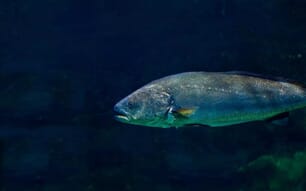The treatment has been developed by two Canada-based scientists – John O’Halloran and John Terence Drost – and is set to be administered orally, via medicated feeds, to salmon ranging from 50 g to 5 kg. Trials conducted by the scientists have shown it to be effective against both Lepeophtheirus and Caligus lice species, although the principle target is Lepeophtheirus salmonis. According to the patent application, salmon can be safely harvested and consumed within 21-25 days after treatment, or when the neonicotinoid residue in the fish is below 0.02 parts per million.
Although the patent is still pending, independent research into the possible efficacy of noenicitinoids against sea lice has also been promising. Indeed, a paper published in the Journal of Fish Diseases last year by Aaen and Horsberg, from the Sea Lice Research Centre at the NMBU School of Veterinary Science, showed the nicotinic (neuronal) acetylcholine receptor (nAChR) to be a suitable target for compounds such as neonicotinoids.
These compounds consist of seven separate insecticides – imidacloprid, thiacloprid, thiamethoxam, acetamiprid, nitenpyram, clothianidin and dinotefuran – and are used to combat pest organisms
on a wide range of crops, as well as parasites on animals. In Australia and New Zealand, products containing compounds from this group are available for use on sheep; otherwise, companion animals are the main consumers of these substances.
A prominent feature of neonicotinoids is their specificity to invertebrate nAChR compared to vertebrate
nAChR and this group of compounds is reported to induce toxic effects on crustaceans when distributed in extremely low concentrations.
Despite this, neonicotinoids are not without controversy, as their use as pesticides on crops has been linked to a steep decline in bee numbers, while their relatively long persistence in aquatic environments could, the scientists suggest, complicate their use as antiparasitic compounds. Nevertheless their trials showed that imidacloprid – which is the compound included in the current patent application – was highly effective against L. salmonis. Exposing lice to imidacloprid for 30 minutes at a concentration of 50 mg L(-1), or for 24 hours at 5 mg L(-1) generated a high level of immobilization.
Although another neonicotinoid, nitenpyram, did not yield a similar effect, the researchers concluded that the nicotinic acetylcholine receptor was a sensitive target for novel salmon lice medicines.



